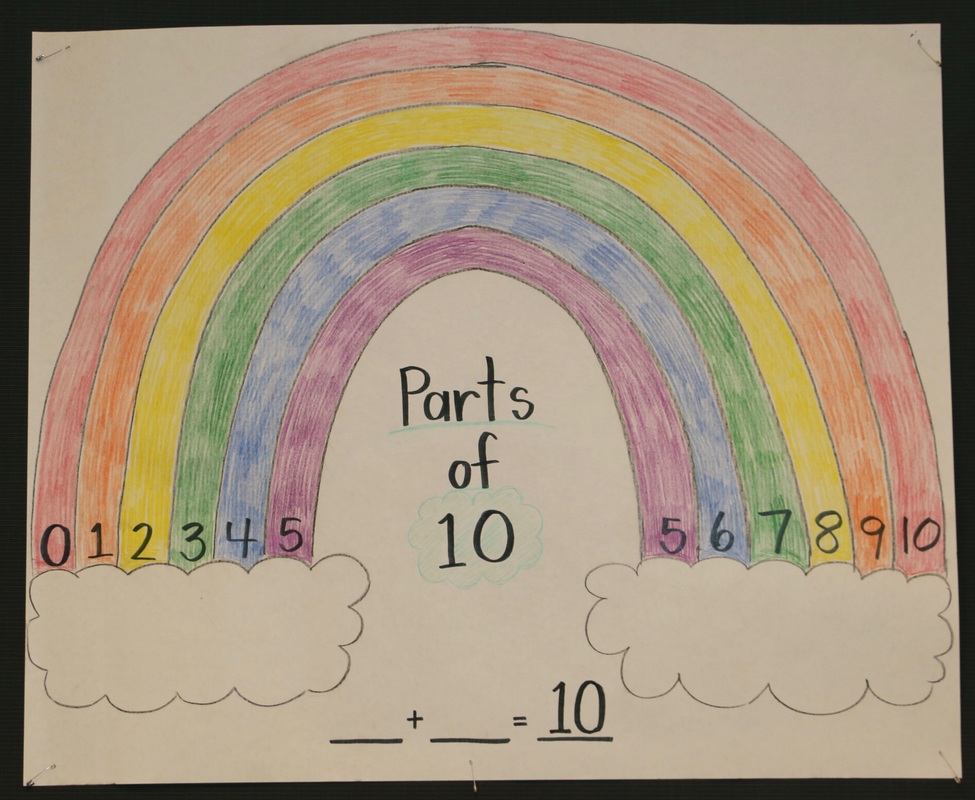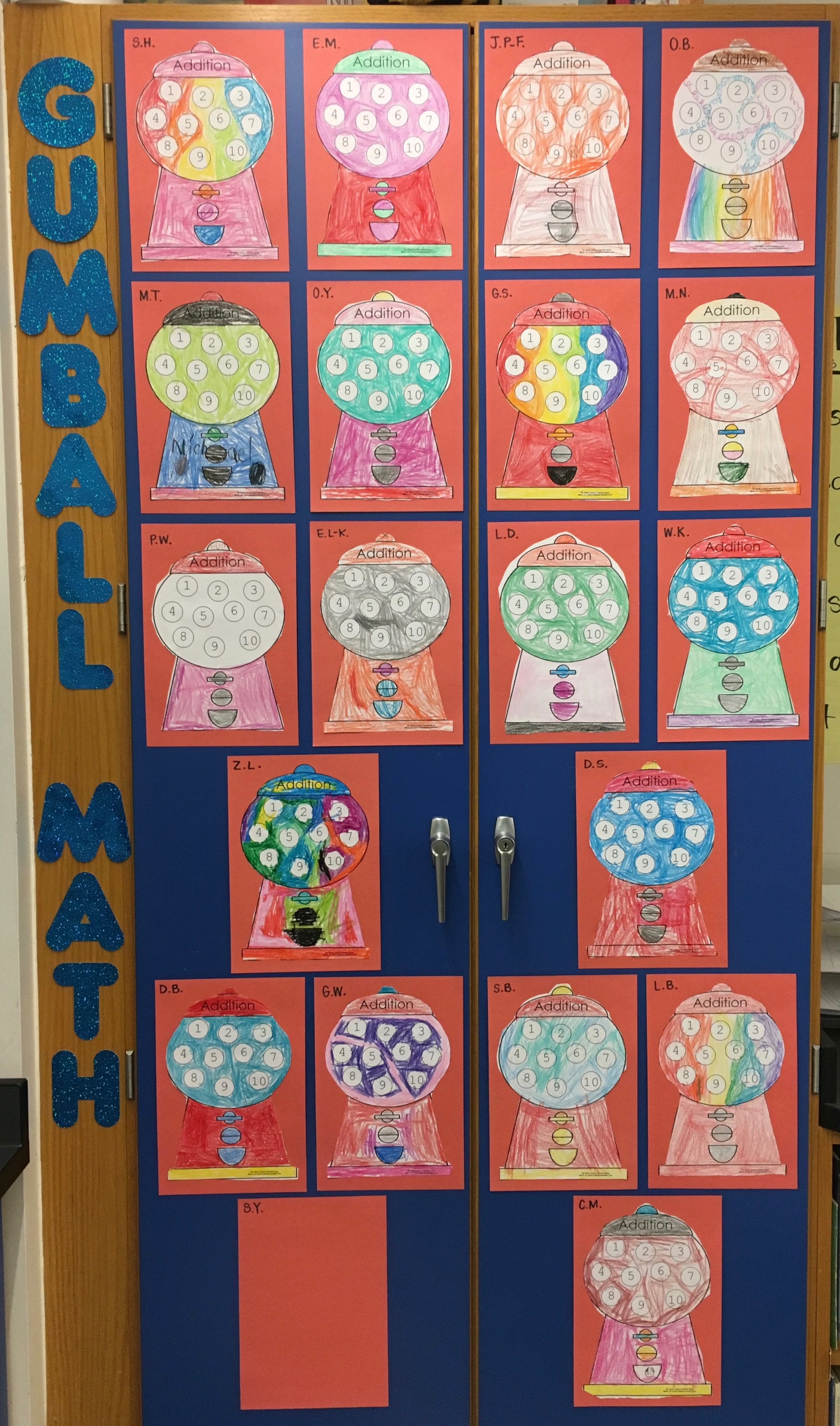enVisions
The DIstrict of Medford adopted a new math program his year.
The program is aligned with the Massachusetts Common Core Standards. |
Massachusetts Curriculum Framework for MathClick on the title above to learn more about the Grade 1 Math Frameworks, and see a sample problem for each one.
| ||||||
Math Games We Will Learn
Concentration/Memory (can be played alone or with a partner)
To play you need: A set of number cards (two sets of 1-10 for a total of twenty cards)
When playing with 2 players:
1. Set up cards: 4 rows of 5 cards.
2. Player one flips 2 cards over,
states the names of the cards they have turned over and whether or not they match,
For example: "I flipped a 10 and a 4. No match."
and turns the cards back over.
3. Player two does the same and play continues until all matches have been
made.
Penny Dice Roll
To play you need: 10 pennies per player for "the bank" one 1-6 number cube (die)
To play:
Players take turns rolling the number cube and taking the correct number of pennies (1-6).
Play continues until all the pennies are gone.
The player with the most pennies wins.
You must have an exact roll to pick up the last of the pennies.
For example: If there are two pennies left, you must roll a 1 or a two to be able to take
penny/pennies. (warning... this can go on for a while)
This game evolves as we learn new coins and their amounts: Penny-Nickel Exchange, Penny-Nickel-Dime Exchange, Penny-Nickel-Dime-Quarter Exchange...
Top-It "War" (played with a partner)
To play you need: A set of number cards (two sets of 1-10 for a total of twenty cards)
When playing with 2 players:
1. Shuffle and deal out all the cards.
2. Players say, "1, 2, 3... Top-It" in unison and flip their top cards. The "higher card" takes both.
The 'winner' is the player with the most cards at the end of the game.
There are many variations and levels of this game: Addition Top-It, Subtraction Top-It, Money Top-It, Domino Top-It.
To play you need: A set of number cards (two sets of 1-10 for a total of twenty cards)
When playing with 2 players:
1. Set up cards: 4 rows of 5 cards.
2. Player one flips 2 cards over,
states the names of the cards they have turned over and whether or not they match,
For example: "I flipped a 10 and a 4. No match."
and turns the cards back over.
3. Player two does the same and play continues until all matches have been
made.
Penny Dice Roll
To play you need: 10 pennies per player for "the bank" one 1-6 number cube (die)
To play:
Players take turns rolling the number cube and taking the correct number of pennies (1-6).
Play continues until all the pennies are gone.
The player with the most pennies wins.
You must have an exact roll to pick up the last of the pennies.
For example: If there are two pennies left, you must roll a 1 or a two to be able to take
penny/pennies. (warning... this can go on for a while)
This game evolves as we learn new coins and their amounts: Penny-Nickel Exchange, Penny-Nickel-Dime Exchange, Penny-Nickel-Dime-Quarter Exchange...
Top-It "War" (played with a partner)
To play you need: A set of number cards (two sets of 1-10 for a total of twenty cards)
When playing with 2 players:
1. Shuffle and deal out all the cards.
2. Players say, "1, 2, 3... Top-It" in unison and flip their top cards. The "higher card" takes both.
The 'winner' is the player with the most cards at the end of the game.
There are many variations and levels of this game: Addition Top-It, Subtraction Top-It, Money Top-It, Domino Top-It.
Topic One: Understanding Addition
Lessons within the topic are:
Spatial patterns for numbers to 10
Making 6 & 7
Making 8
Making 9
Introducing addition expressions and number sentences
Stories about joining
Adding in any order
PROBLEM SOLVING: Use objects
Topic Two: Understanding Subtraction
Lessons within the topic are:
Finding missing parts of 6 & 7
Finding missing parts of 8
Finding missing parts of 9
Introducing subtraction expressions and number sentences
Stories about taking away
Stories about comparing
Stories about missing parts
All kinds of subtraction stories
Connecting addition and subtraction
Connecting models and symbols
PROBLEM SOLVING: Act it out
Lessons within the topic are:
Spatial patterns for numbers to 10
Making 6 & 7
Making 8
Making 9
Introducing addition expressions and number sentences
Stories about joining
Adding in any order
PROBLEM SOLVING: Use objects
Topic Two: Understanding Subtraction
Lessons within the topic are:
Finding missing parts of 6 & 7
Finding missing parts of 8
Finding missing parts of 9
Introducing subtraction expressions and number sentences
Stories about taking away
Stories about comparing
Stories about missing parts
All kinds of subtraction stories
Connecting addition and subtraction
Connecting models and symbols
PROBLEM SOLVING: Act it out
Parts of 10? We can do that! Just think R A I N B O W
Coming Soon... "GUMBALL MATH"!!
We will begin taking 5 minutes each week to practice addition (+1, +2, +3... +10) and subtraction facts (-1, -2, -3... -10) soon. "Gumball Math" is just a fun way we keep track of our progress.


